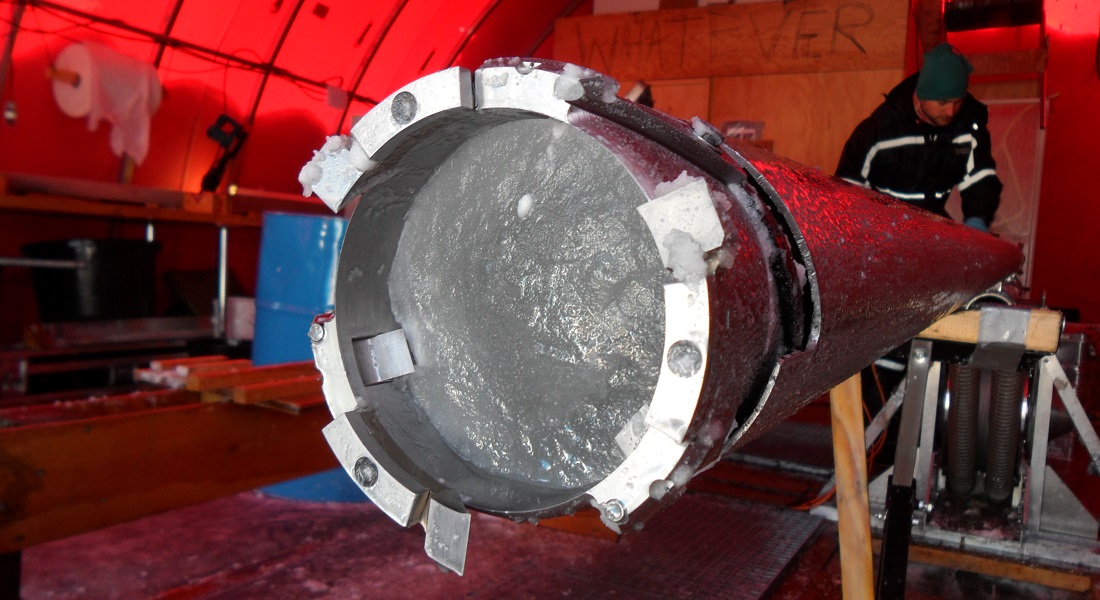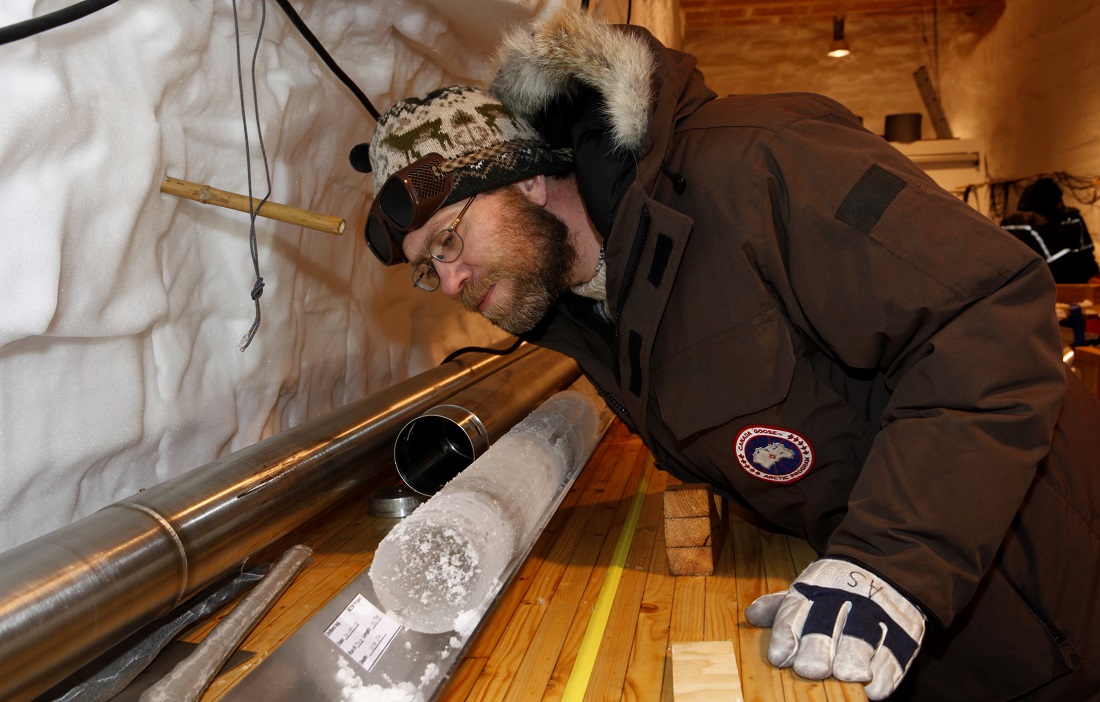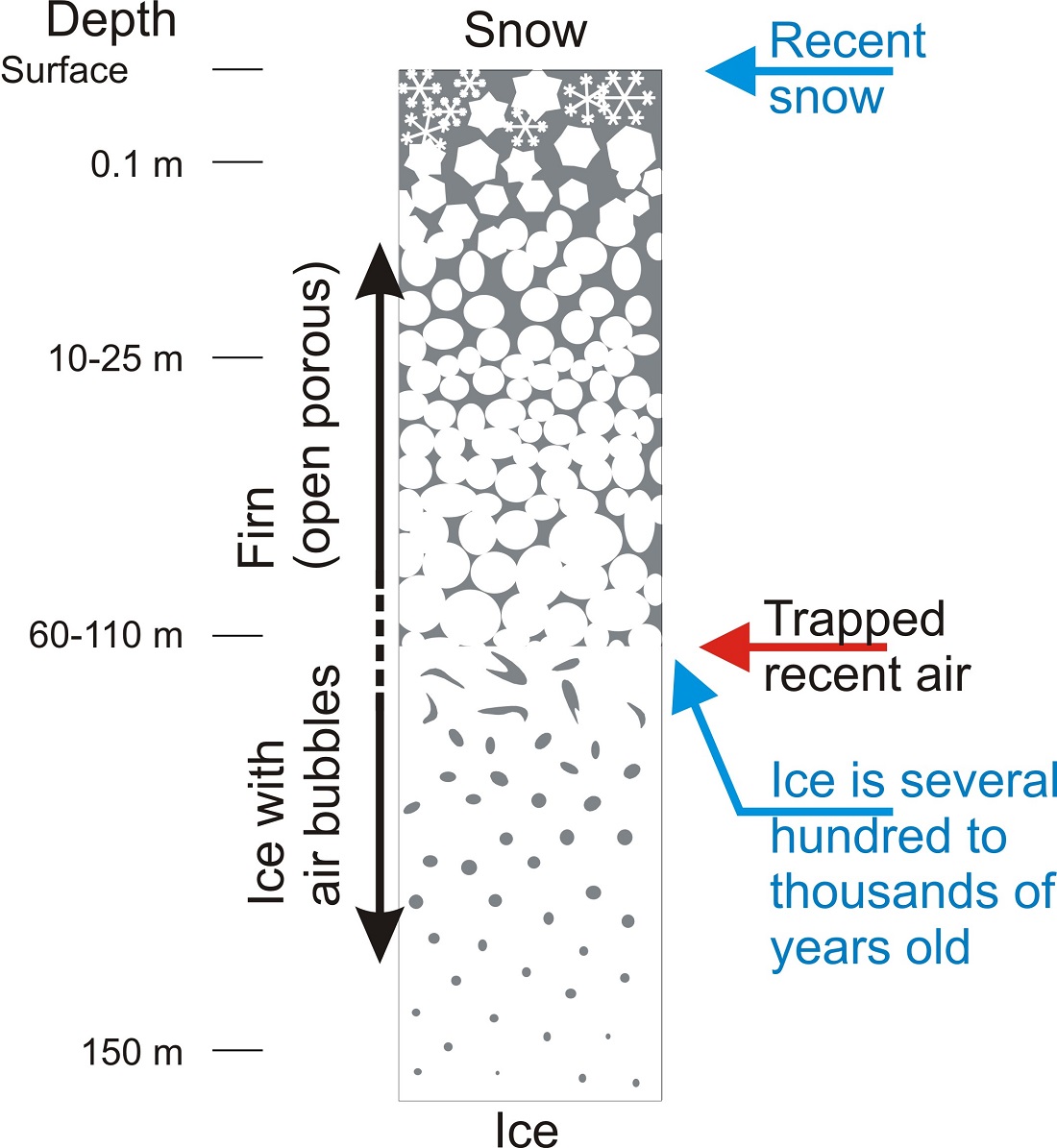Ancient air bubbles speak to a much warmer Antarctica during the ice-age than once believed
Twenty thousand-year-old air bubbles have revealed that Antarctic temperatures during the last ice age were markedly different than what the leading science once suggested. This is according to new research in which the University of Copenhagen played a significant role. The result means that current global sea level rise predictions will most likely need to be revised.

As researchers seek to piece together a puzzle of how much and how quickly climate change will cause the world's oceans to rise, conditions in ice-age Antarctica are particularly important. Indeed, today’s climate models are based upon reconstructions of past climate events.
A new research result, in which the University of Copenhagen plays an important role, demonstrates that East Antarctica, which makes up the majority of the continent, was far less cold during the last ice age 20,000 years ago than the science once suggested. Specifically, temperatures were 4-5 degrees colder than now and not 9 degrees colder, as has been presumed for decades. The results have just been published in the journal Science.
"This marks the first time that we’ve had a clear and consistent answer as to what ice age temperatures in Antarctica were like. It demonstrates that both the temperatures and thickness of the Antarctic ice sheet were markedly different from what the accepted science once suggested, which is what we’ve based our climate models on," explains co-author Anders Svensson, an associate professor at the University of Copenhagen’s Niels Bohr Institute.
Sulphuric acid and air bubbles
The established estimate of Antarctic temperatures being roughly 9 degrees colder than today is based on analyses of water isotopes from the ice. The problem has been that no one has been able to verify these results.
The research team behind the study was the first to achieve similar results from two independent methods. One of the methods involves measuring temperatures from within the boreholes where the ice core samples were drilled. Generally speaking, this is achieved by dipping a thermometer into a borehole where ice-age temperatures are ‘stored’ due to ice being a poor thermal conductor.
The second and new method is the one contributed by Anders Svensson. He and his research colleagues discovered sulphuric acid of volcanic origin in Greenlandic ice, which was recognizable to the researchers as being from precisely the same volcanic eruptions as the material found in Antarctic ice cores.

"As a result of our counting the annual layers between volcanic acid peaks in Greenland, we have an accurate time scale that we can transfer to Antarctica to see exactly how long it took to encapsulate air bubbles in the ice down there," says Svensson.
These tiny air bubbles, that have been trapped within the ice for thousands of years, play a key role. The longer that snow is compressed from the surface, the more compact it becomes, and the less space there is for air. When air ceases to circulate – typically 50-70 meters beneath the ice cap – snow becomes ice and air bubbles occur. Thus, the bubbles are about the same age as the surface of the ice sheet and always younger than the ice in which they are encased. In Antarctica, where fresh snow is rare and annual layers thin, the difference in age between ice and air bubbles can be several thousands of years.
"While the age difference has been a source of great uncertainty in Antarctica thus far, by using the volcanic link with Greenland, we are now able to determine that age difference precisely. Since this age difference depends on temperature and precipitation, it can be used to determine how much snow fell and how cold it was in Antarctica during the last ice age," explains Svensson.
The study also demonstrates that the East Antarctica Ice Sheet was most likely lower in elevation during the ice age than it is today. As ice age temperatures were generally colder, less water evaporated from the oceans and less snow fell on Antarctica. Today we see the opposite effect, with global warming causing a bit more snow to fall on Antarctica than during the pre-industrial era.
Will lead to more accurate climate models
The implication of these research results is that existing global sea level rise projections will likely require adjustment, as they are based on incorrect data. It is now possible to calibrate climate models for the ice sheets based on the new data, and in doing so, achieve more accurate predictions.
However, the researchers emphasize that it remains too soon to say how the new results will alter climate projections and whether this will be for better or worse.
"It is crucial for us to understand the historic size of ice sheets, as well as what the sea levels of the past were like. Otherwise, we cannot understand the mechanisms that control the melting of ice sheets. If there is such uncertainty today about how much and at what pace our oceans will rise, it is in part because we don’t quite understand how ice sheets react to major climatic changes. The new results will help serve to address this," concludes Anders Svensson.

Topics
Related News
Contact
Anders Svensson
Associate Professor
Niels Bohr Institute
University of Copenhagen
as@nbi.ku.dk
+45 35 32 06 16
Maria Hornbek
Journalist
Faculty of Science
University of Copenhagen
maho@science.ku.dk
+45 22 95 42 83
ABOUT THE STUDY
- The study proposes that the temperature of West Antarctica was roughly 10 degrees colder during the last ice age than today, whereas the temperature of East Antarctica was only 4-5 degrees colder than now. East Antarctica makes up two-thirds of the continent.
- The results have been published in the journal Science.
- The research is a collaboration between a wide range of researchers from around the world, led by Christo Buizert of Oregon State University.
- Anders Svensson, a geophysicist, glaciologist and associate professor at the Center for Ice, Climate and Earth at the Niels Bohr Institute, has been researching Earth’s climate history using ice cores from Greenland and Antarctica for more than 25 years.
- Anders Svensson's research is supported by the Villum Foundation.
